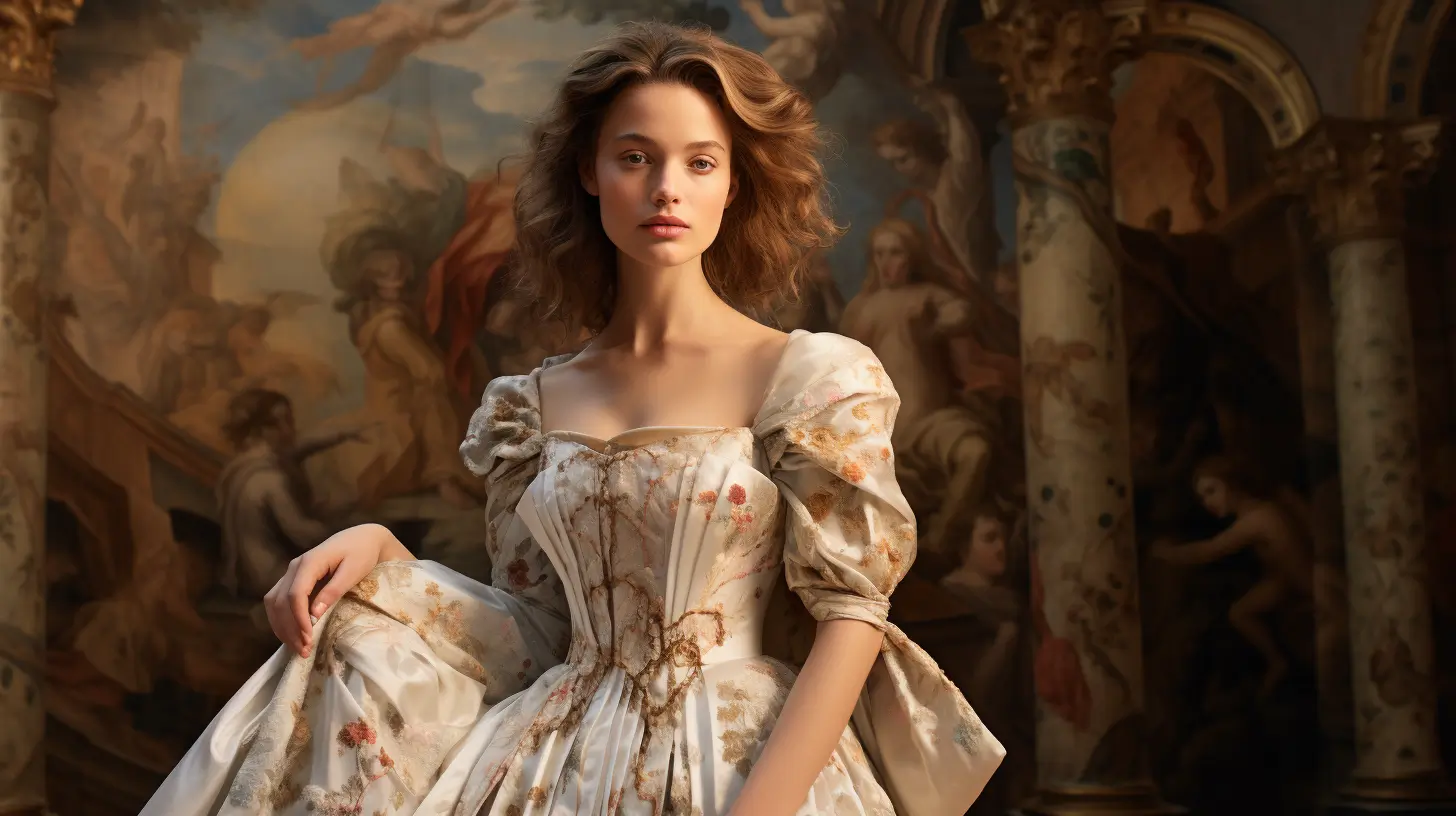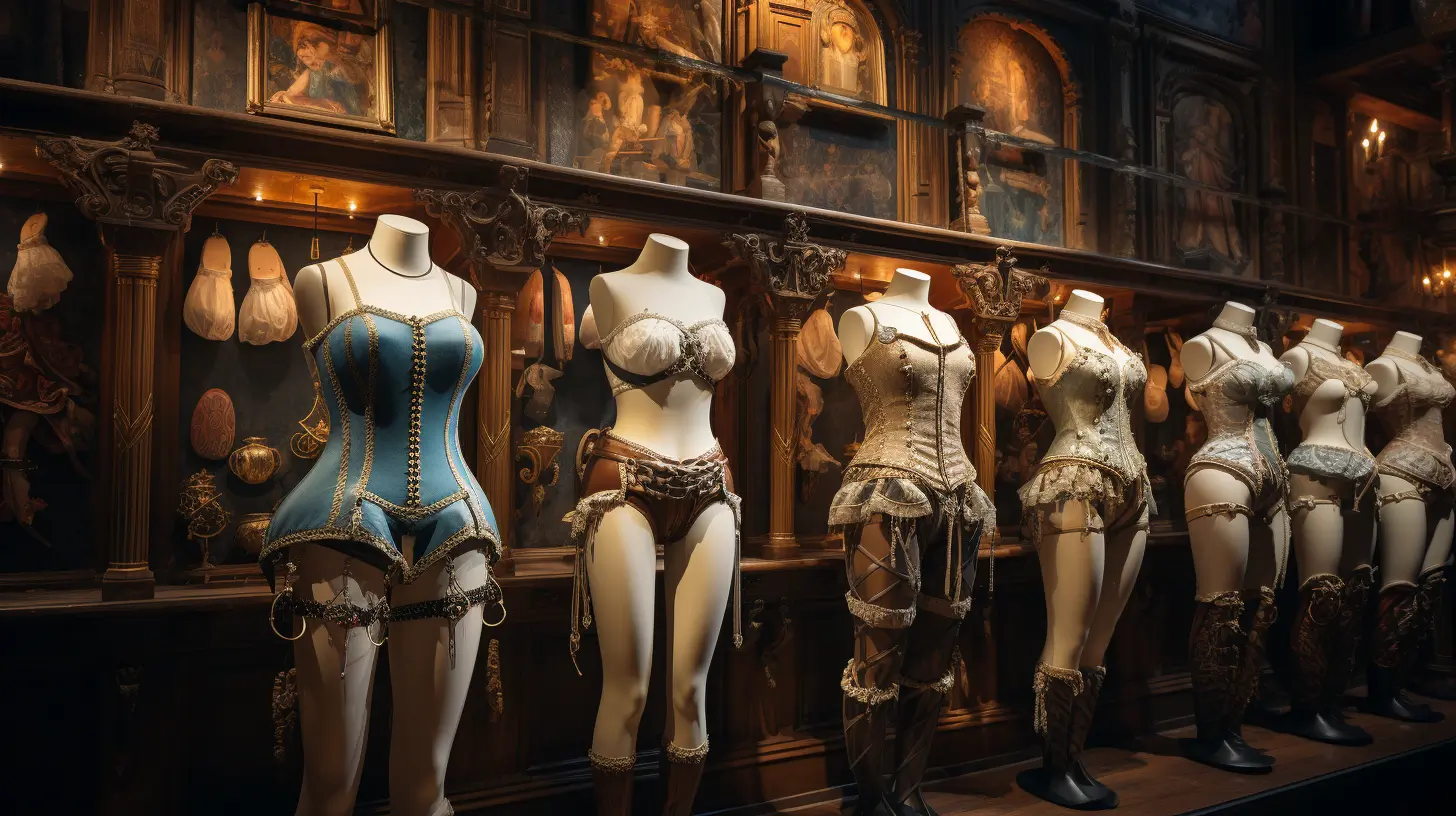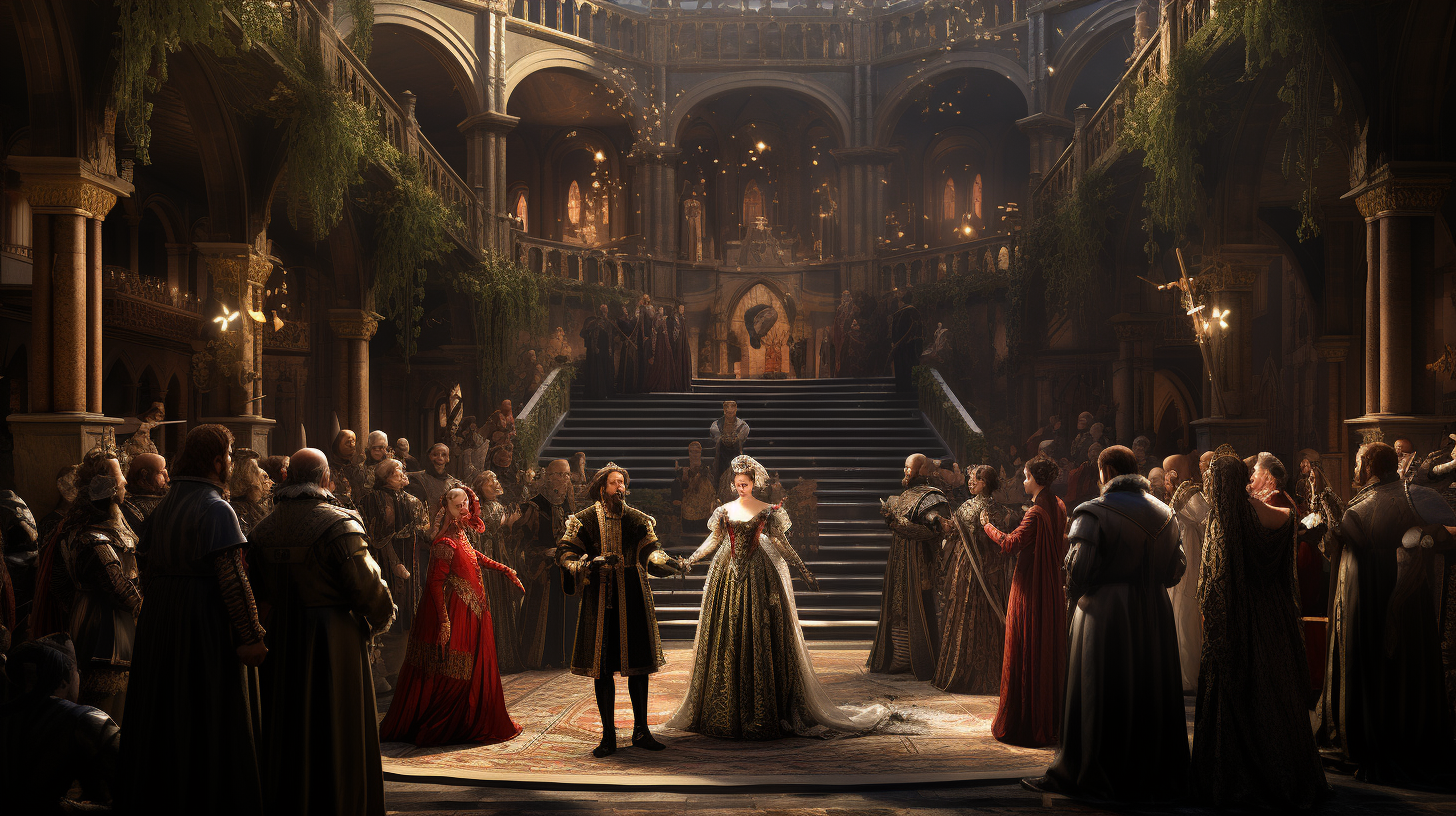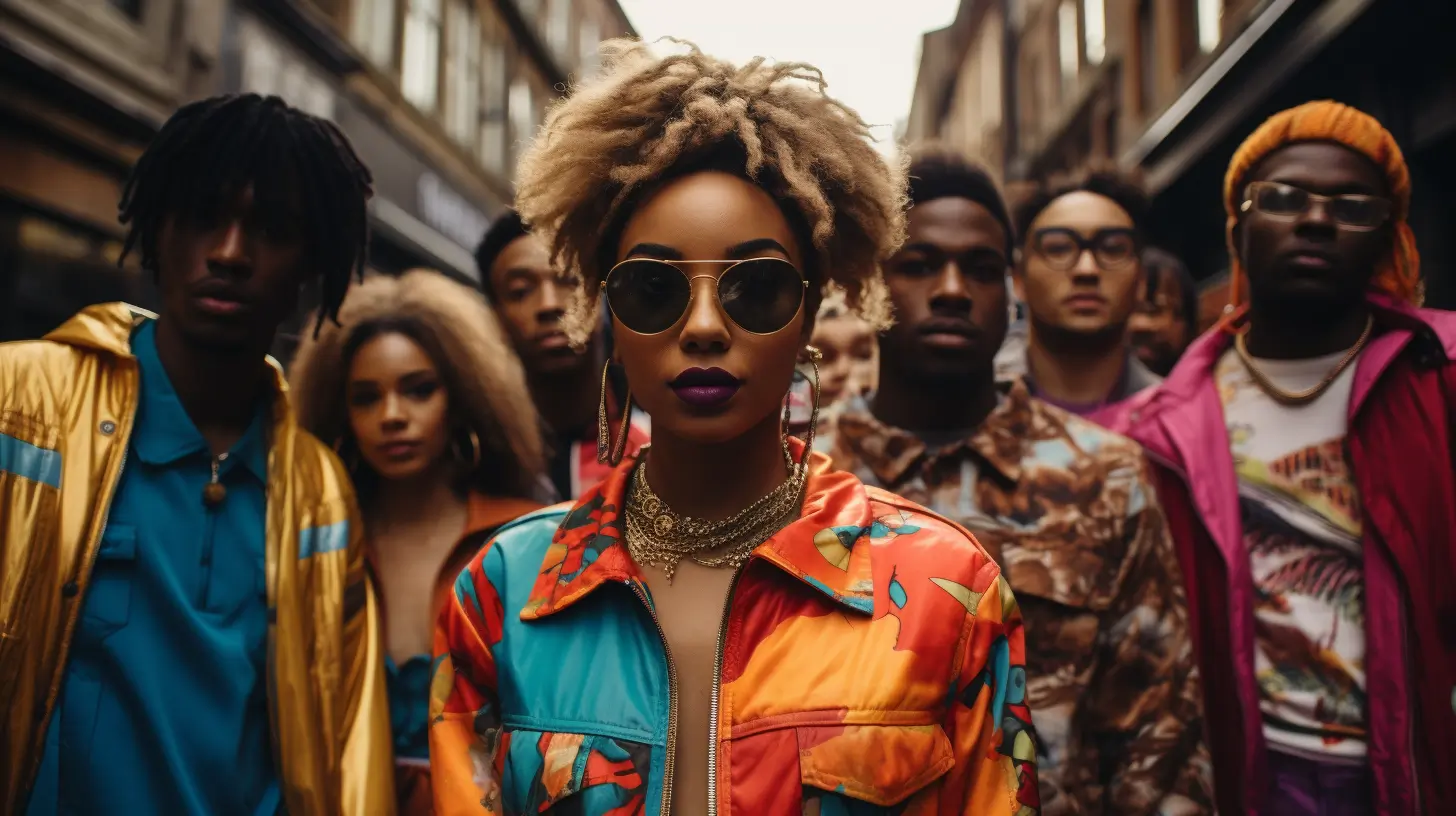
1980s Streetwear: The Birth of Hip-Hop Fashion
1980s Streetwear: The Birth of Hip-Hop Fashion
In the bustling urban landscapes of the 1980s, a fashion revolution was underway, a rhythmic dance of self-expression and cultural transformation. It was an era when the streets of New York City pulsed with the beat of creativity and rebellion, giving birth to an iconic style that would reverberate through the ages.
Amidst the concrete canyons and the pulsating sounds of hip-hop music, a unique fusion of art, music, and fashion was taking shape. This was the birth of hip-hop culture, an electrifying movement that not only defined a generation but left an indelible mark on the world of fashion.
As we embark on this journey through time, we’ll unravel the rich tapestry of 1980s streetwear—a phenomenon that transcended clothing to become a cultural force. From oversized clothing that spoke volumes to bold accessories that shimmered with attitude, each element of this trend was a brushstroke on the canvas of individuality.
Join us as we delve deep into the roots of this transformative era, exploring the birth of hip-hop culture and its profound influence on fashion. Prepare to traverse an urban landscape where oversized clothing, bold accessories, and unique hairstyles were the threads that wove together a remarkable narrative of style and identity.
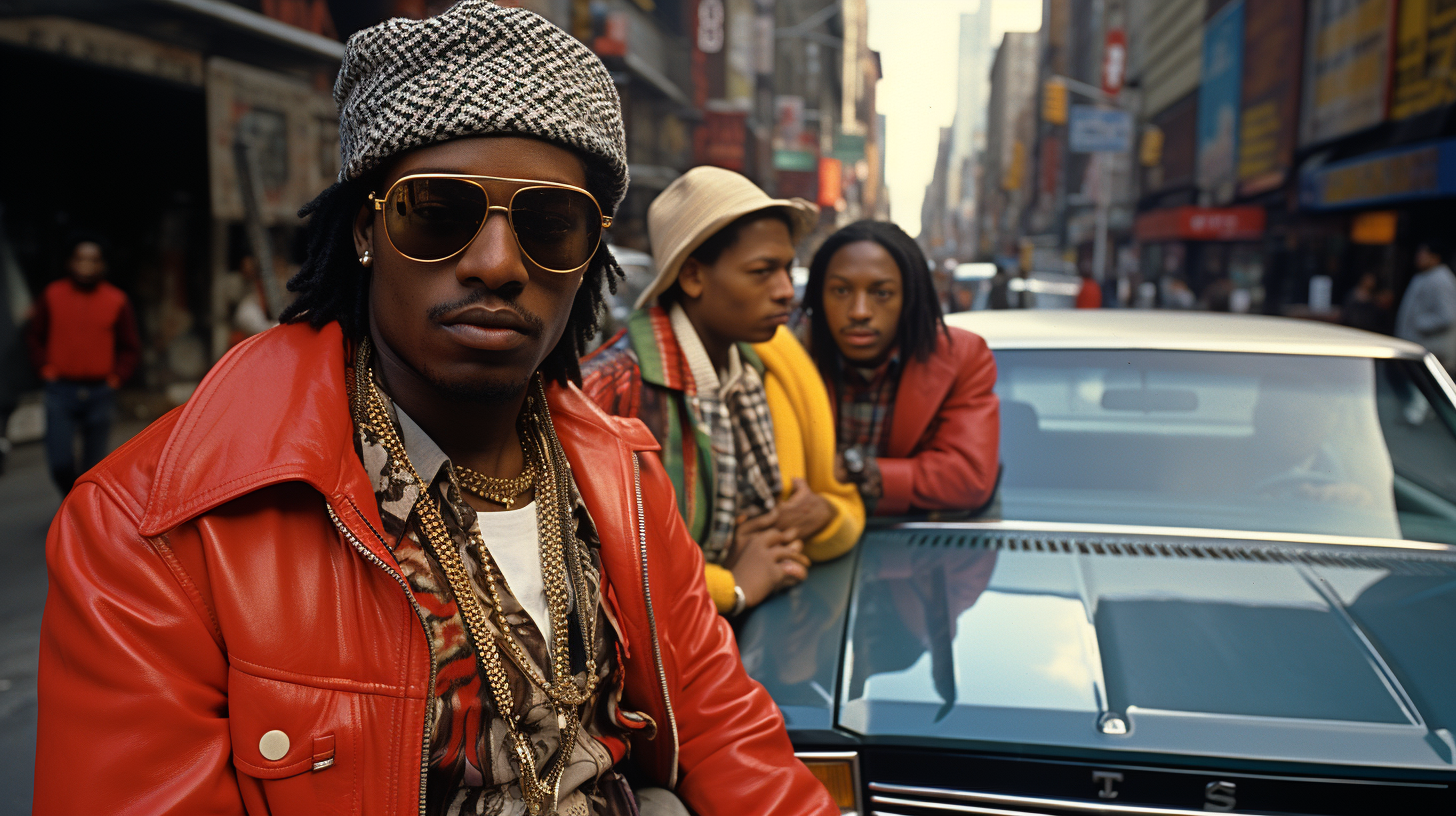
Image Description: A snapshot of a bustling 1980s street scene, where individuals clad in oversized clothing and bold accessories exude an unmistakable sense of urban coolness. The city streets serve as a backdrop, pulsating with the energy of hip-hop culture.
The Birth of Hip-Hop Culture
Unraveling the Roots of a Revolution
The stage was set in the gritty neighborhoods of 1980s New York, where a cultural revolution was brewing beneath the towering skyscrapers. It was a movement that would shake the foundations of society, and it began with the birth of hip-hop culture.
Hip-hop. These two words carried the weight of a generation’s aspirations and struggles. Born in the Bronx, it was more than just a genre of music; it was a way of life. The rhythm of beats and rhymes echoed through the streets, giving voice to a diverse and passionate community.
The Origins and Cultural Roots
From the South Bronx to the World
To understand the essence of hip-hop, we must first venture into its origins. It was in the South Bronx, amidst the economic hardships and social challenges, that hip-hop found its fertile ground. Abandoned buildings became canvases for graffiti artists, turntables spun stories, and dancers defied gravity on the sidewalks.
This was a culture born from adversity, a response to the world’s neglect. Hip-hop emerged as a platform for self-expression, a megaphone for those whose voices had been marginalized for too long.
Music, Dance, and Art
The Creative Trifecta
Hip-hop culture was a creative explosion, where music, dance, and art intertwined like threads in a vibrant tapestry. The beatboxing and lyrical prowess of MCs, the gravity-defying moves of breakdancers, and the vivid graffiti adorning city walls—all these elements converged to form a dynamic cultural force.
Music was the heartbeat of hip-hop, with DJs like Grandmaster Flash and Afrika Bambaataa pioneering the turntablism that defined the genre. Breakdancing crews battled for supremacy on the streets, turning pavement into a dance floor. Graffiti artists left their mark, not as vandals, but as storytellers painting the narrative of their lives.
Cultural Diversity and Creativity
A Mosaic of Voices
One of the most remarkable aspects of hip-hop culture was its inclusivity. It transcended racial, ethnic, and social boundaries, providing a stage where voices from all walks of life could be heard. African, Latinx, and Caribbean influences merged, giving birth to a diverse tapestry of artistic expression.
Creativity thrived in this environment, as individuals pushed the boundaries of what was possible. It wasn’t just about the music; it was a mindset—a creative defiance against the status quo. Hip-hop culture celebrated individuality, and it was this celebration that would eventually spill over into fashion.
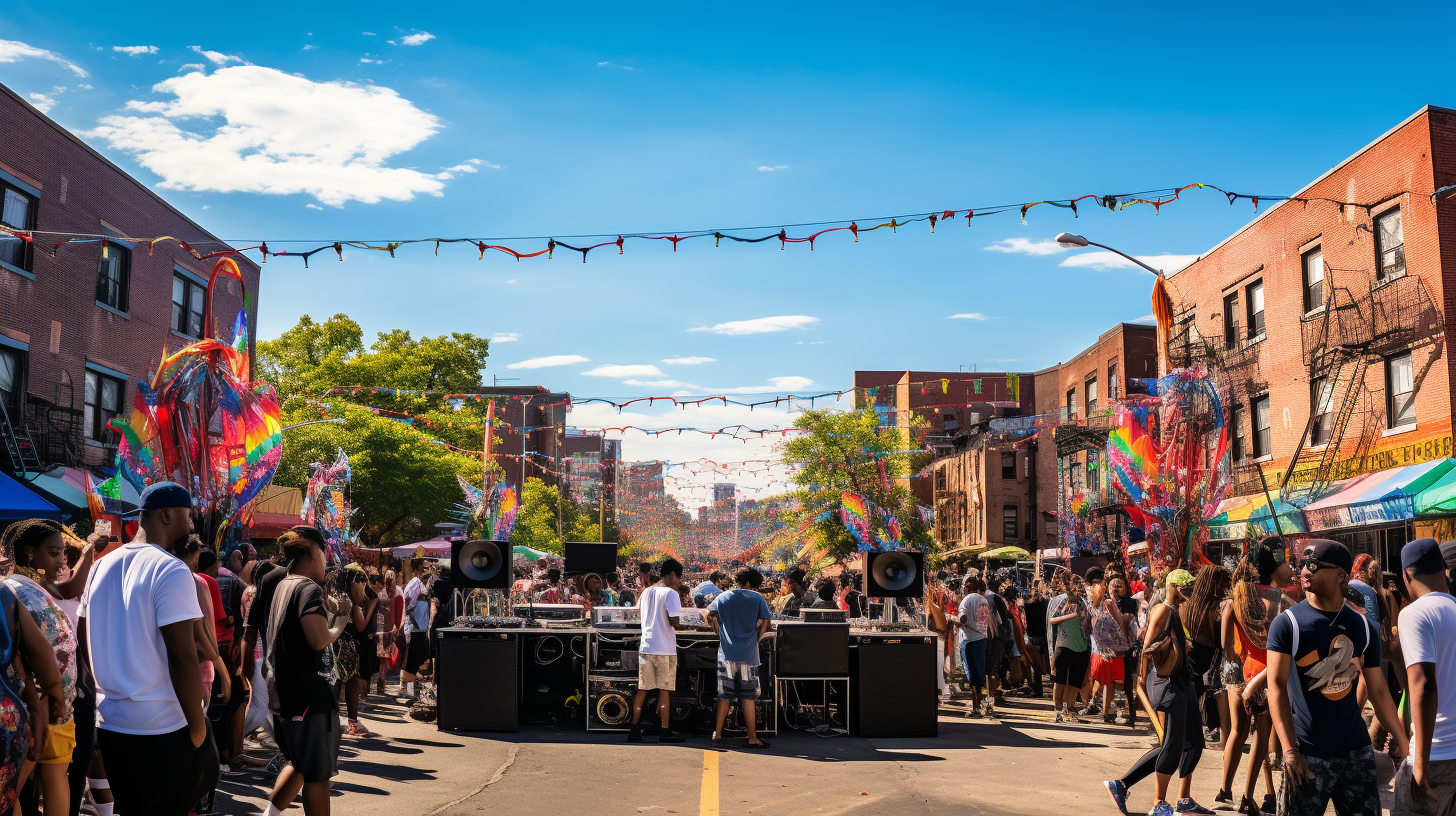
Image Description: A bustling street scene in the South Bronx, filled with colorful graffiti art, dancers mid-breakdance move, and DJs spinning records. The vibrant diversity of the community is evident as people from various backgrounds come together to celebrate hip-hop culture.
Oversized Clothing: A Bold Statement
Embracing the Big and Bold
In the 1980s, the world of fashion underwent a seismic shift as hip-hop culture began to leave its indelible mark. One of the most iconic and readily noticeable aspects of this transformation was the trend of oversized clothing—a bold statement that defied convention.
The Significance of Oversized Clothing
Breaking the Mold
Oversized. It was more than a descriptor; it was a manifesto. The clothing of the 1980s streetwear scene deviated from the conventional norms of fashion. Baggy pants, oversized jackets, and loose-fitting attire were no longer seen as sartorial missteps but as deliberate choices to express a unique style and attitude.
This rebellion against the status quo was a reflection of the hip-hop culture’s refusal to conform to established norms. Oversized clothing was not about hiding in the crowd; it was about standing out and making a statement.
Bold and Unapologetic
An Attitude in Every Stitch
The oversized clothing trend was more than just a matter of size; it was an embodiment of the hip-hop spirit. Baggy jeans and oversized t-shirts were not chosen for comfort alone; they were a canvas for self-expression.
Individuals customized their clothing, adding unique designs, patches, and graffiti-style prints. These garments were not just fabric; they were statements, shouts of individuality, and markers of identity.
Oversized as a Form of Empowerment
Claiming Space
For many, especially in marginalized communities, oversized clothing became a symbol of empowerment. It was a way to claim space, both literally and metaphorically, in a world that had often marginalized their voices. It challenged preconceived notions of beauty and conformity.
In the oversized, individuals found freedom—freedom from judgment, freedom from stereotypes, and freedom to be themselves. It was a rebellion against the expectation of ‘fitting in’ and a declaration that they were here to take up space.
Image Description: An illustration capturing the essence of oversized clothing in the 1980s. A figure clad in baggy jeans, an oversized jacket, and a boldly designed t-shirt stands confidently, radiating a sense of self-assuredness and defiance. The oversized clothing exudes a rebellious and bold attitude, reflecting the spirit of the era.
Bold Accessories: Bling and Beyond
Shining Bright in the Urban Jungle
In the vibrant tapestry of 1980s streetwear, one couldn’t help but be dazzled by the array of bold accessories that adorned individuals with style and swagger. This section delves into the world of accessories, where bold became the buzzword, and bling was the order of the day.
The Iconic Chunky Gold Chains
Shimmering Statements
Among the most iconic accessories of the era were the chunky gold chains that graced the necks of hip-hop enthusiasts. These were not just pieces of jewelry; they were symbols of status, confidence, and a willingness to be seen.
The oversized links and shimmering surfaces caught the light and drew attention, turning wearers into walking reflections of urban coolness. These chains weren’t subtle, and they weren’t meant to be. They were bold, they were loud, and they spoke volumes.
Hoop Earrings: Elegance with an Edge
Framing the Face
Hoop earrings became another hallmark of hip-hop fashion, adorning the ears of both men and women. These accessories framed faces with an elegant yet edgy touch. Hoops came in various sizes, from understated to oversized, allowing for personal expression.
Much like the music that inspired the fashion, hoop earrings had a rhythm of their own, swinging and swaying with each movement. They added a touch of glamour to the street, proving that sophistication could coexist with rebellion.
Sunglasses: The Cool Factor
Shading the Eyes
Sunglasses were more than just eye protection; they were a fashion statement. Oversized shades with colorful lenses and bold frames became a must-have accessory. They shielded eyes from the urban glare and shielded wearers from the prying eyes of conformity.
These shades added an air of mystique, giving wearers an aura of intrigue. They were both functional and fashionable, serving as a shield against the world’s judgments while enhancing the overall look.
Accessories as Symbols of Identity
Beyond the Surface
Bold accessories in hip-hop fashion weren’t just about aesthetics; they were symbols of identity and pride. They reflected the individuality and confidence of those who wore them. Each chain link, hoop earring, and pair of sunglasses told a story—a story of defiance, creativity, and a refusal to blend into the background.
These accessories weren’t mere embellishments; they were the final brushstrokes on the canvas of a unique identity, a testament to the power of fashion as a form of self-expression.
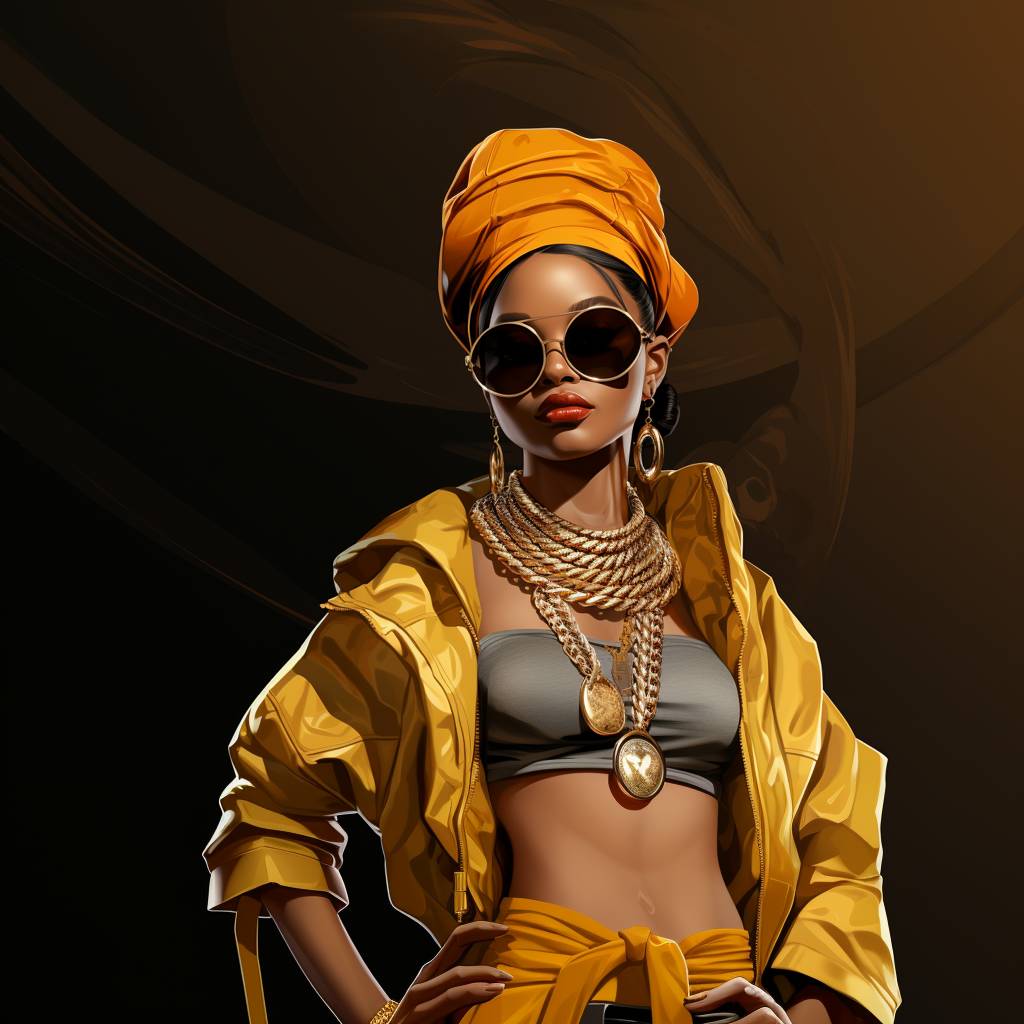
Image Description: An artist’s rendering capturing the essence of bold accessories in 1980s streetwear. A figure adorned with a chunky gold chain, oversized hoop earrings, and stylish sunglasses exudes confidence and style. The accessories shimmer and shine, adding an extra layer of boldness to the overall look, reminiscent of the iconic fashion of the era.
Unique Hairstyles: Artistic Expression
Strands of Creativity
In the vivid tapestry of 1980s streetwear, hairstyles took center stage as a canvas for artistic expression. This section dives into the world of unique hairstyles that were not just fashion statements but profound symbols of individuality.
The Diverse World of Hairstyles
Unleashing Creativity
The 1980s witnessed an explosion of diverse and creative hairstyles within the hip-hop and streetwear community. No longer bound by conventional norms, individuals used their hair as a means to express their identity and style.
From intricate braids and colorful hair extensions to gravity-defying high-top fades and eye-catching afros, the options were as limitless as the imagination. Hairstyles became a form of art, showcasing the creativity and individuality of those who sported them.
The High-Top Fade: Reaching for the Sky
Defying Gravity
One of the most iconic hairstyles of the era was the high-top fade, a towering masterpiece of hair that seemed to defy gravity. This style featured closely shaved sides and a flat, rectangular top that soared high above the head.
The high-top fade was more than just a hairstyle; it was a symbol of confidence and self-assuredness. It required meticulous grooming and attention, making it a labor of love for those who embraced it.
Braids, Beads, and Colorful Extensions
Strands of Artistry
Braided hairstyles with colorful beads and extensions became a popular choice for both men and women. These intricate designs allowed individuals to infuse their hair with a burst of color and creativity.
Each braid and bead was a deliberate choice, telling a story and reflecting personal style. It was a celebration of cultural heritage and a nod to the diverse influences that shaped hip-hop culture.
Hairstyles as Statements
More Than Meets the Eye
Beyond the aesthetics, hairstyles in the 1980s were statements of self-confidence and cultural pride. They challenged societal norms and celebrated individuality, becoming a form of resistance against conformity.
These unique hairstyles were not just about looking good; they were about feeling good and unapologetically embracing one’s identity. They were a reminder that fashion was more than skin deep; it was an extension of one’s inner self.
Image Description: An artist’s representation capturing the essence of unique hairstyles in the 1980s. The figure showcases a high-top fade, colorful braids with beads, and vibrant extensions, each hairstyle a testament to creativity and individuality. The hairstyles are a work of art, reflecting the spirit of the era’s fashion and self-expression.
Influence on Contemporary Fashion
Echoes of the Past in the Present
The 1980s streetwear and hip-hop fashion weren’t confined to their era; they left an indelible mark on contemporary fashion. In this section, we’ll explore how the trends and attitudes of that time continue to resonate in the fashion landscape of today.
The Enduring Legacy of 1980s Streetwear
Timeless Influence
It’s often said that fashion has a cyclical nature, and the 1980s streetwear scene is a prime example of this phenomenon. Today, we see a resurgence of oversized clothing, bold accessories, and unique hairstyles that pay homage to the past while adding a modern twist.
Contemporary designers draw inspiration from the era, infusing their collections with the spirit of rebellion and self-expression that defined 1980s streetwear. The oversized blazers, baggy pants, and chunky sneakers that dominate runways and street style are a direct nod to this influential period.
Streetwear Brands Leading the Way
Reinventing the Classics
Streetwear has evolved into a global phenomenon, with brands like Supreme, Off-White, and Yeezy at the forefront of the movement. These labels embrace the ethos of the 1980s by blending high fashion with street culture, resulting in clothing that’s both exclusive and accessible.
These brands have redefined luxury, making it more relatable to a younger and more diverse audience. They’ve brought the spirit of hip-hop culture to the forefront of fashion, challenging traditional notions of high-end style.
Celebrity Endorsement and Influence
Icons of Style
In the age of social media and celebrity culture, famous figures have become influential tastemakers. Celebrities from various fields, including music, sports, and entertainment, have embraced the aesthetics of 1980s streetwear.
When we see artists like Kanye West, Rihanna, or Travis Scott rocking oversized hoodies and vintage-inspired sneakers, they’re not just following a trend; they’re paying homage to the cultural heritage of hip-hop fashion. Their endorsements further solidify the enduring legacy of this iconic era.
A Fashion Evolution
From Rebellion to Mainstream
What began as a rebellion against the fashion norms of the time has now become an integral part of the mainstream. 1980s streetwear has shaped the way we view fashion, transforming it from a mere commodity into a form of self-expression and identity.
As we navigate the contemporary fashion landscape, we’re reminded that the spirit of hip-hop culture lives on. It’s a testament to the power of fashion to transcend time and space, constantly evolving while remaining rooted in its rebellious origins.
Image Description: An artistic representation blending elements of 1980s streetwear with modern fashion trends. The image features a model wearing a contemporary oversized blazer, chunky sneakers, and bold accessories, all while paying homage to the aesthetics of hip-hop culture. It captures the seamless fusion of past and present in the world of fashion.
Streetwear Subcultures
The Many Faces of Urban Fashion
Within the vibrant tapestry of streetwear, there exist various subcultures, each with its unique identity and influences. In this section, we will delve into these subcultures, exploring how they contributed to the evolution of streetwear.
Skateboarding Culture: A Rebellious Vibe
On Four Wheels
Skateboarding culture played a pivotal role in shaping streetwear, particularly in the 1980s. Skaters adopted a style that was both functional and fashion-forward. Baggy pants, graphic tees, and sneakers were staples of this subculture.
The DIY ethos of skateboarding mirrored that of hip-hop, emphasizing self-expression and a sense of rebellion. Over time, the fusion of skateboarding and streetwear became emblematic of urban coolness.
Punk Influence: Raw and Edgy
Anarchy on the Streets
The punk subculture, known for its raw and edgy aesthetic, made its mark on streetwear in the 1980s. Leather jackets, torn jeans, and band t-shirts were embraced by individuals who rejected mainstream fashion.
Punk’s anti-establishment attitude resonated with the ethos of streetwear, as both movements rejected conformity and celebrated individuality. Elements of punk style, such as studded accessories and bold graphics, became integral to the streetwear scene.
Surf and California Vibes: Laid-Back Cool
Riding the Waves
On the opposite coast, California’s surf culture had its own impact on streetwear. The laid-back, beach-inspired style featured comfortable clothing, relaxed fits, and vibrant colors.
Surfers and beachgoers influenced streetwear with their casual approach to fashion. Elements like board shorts, tank tops, and flip-flops found their way into the streetwear wardrobe, adding a touch of sunny optimism to urban fashion.
Hip-Hop Dance Crews: Dance as Fashion
Grooving in Style
The dance crews of hip-hop culture brought their unique sense of style to the forefront. Breakdancers, in particular, had distinctive looks that included tracksuits, high-top sneakers, and headbands.
Their outfits were not just functional for dancing but also made a visual statement. Dance crews embraced the idea that fashion was an extension of their artistry, and their influence on streetwear was profound.
Subcultures as Catalysts
Fusion and Evolution
These subcultures, with their diverse influences and styles, were catalysts for the evolution of streetwear. Over time, streetwear absorbed elements from each subculture, resulting in a dynamic and ever-changing fashion landscape.
The beauty of streetwear lies in its ability to embrace different subcultures and reinterpret them through the lens of urban fashion. It’s a testament to the genre’s adaptability and its willingness to celebrate a multiplicity of identities.
Image Description: An artist’s rendering representing the essence of various streetwear subcultures. The image showcases individuals dressed in skateboarding attire, punk-inspired outfits, surf culture-inspired clothing, and breakdancer attire. Each figure embodies the distinct style and attitude of their respective subculture, highlighting the fusion of influences within streetwear.
The Enduring Legacy of Hip-Hop Fashion
From the Streets to the World Stage
As we reflect on the evolution of hip-hop fashion, it becomes evident that this cultural movement wasn’t confined to a particular time or place. Instead, it transcended borders, becoming a global phenomenon that continues to shape the fashion industry today.
A Global Cultural Export
Spreading the Message
Hip-hop culture, including its fashion, quickly spread beyond the streets of New York and across the United States. It found resonance in urban centers around the world, from London to Tokyo, Paris to Johannesburg. This global embrace spoke to the universal themes of resilience, creativity, and self-expression embedded in hip-hop.
In each corner of the globe, young people found their voices through hip-hop, adopting the style and attitude as a form of cultural identity. The music, dance, and fashion of hip-hop became a universal language that transcended linguistic and cultural barriers.
Fashion Capitals Embrace Streetwear
From Runways to Street Corners
The influence of hip-hop fashion extended to the highest echelons of the fashion world. In the early 2000s, luxury fashion houses began to collaborate with streetwear brands, blurring the lines between high-end and street fashion.
Today, it’s not uncommon to see streetwear-inspired collections on the runways of Paris and Milan. The oversized silhouettes, graphic prints, and bold accessories that were once considered underground are now embraced by couture houses, showcasing the enduring impact of hip-hop fashion.
A Celebration of Diversity
Fashion for All
One of the most significant legacies of hip-hop fashion is its role in promoting diversity and inclusivity within the fashion industry. Hip-hop culture has always celebrated individuality, regardless of race, gender, or background.
In an industry often criticized for its lack of representation, hip-hop fashion has been a champion of diversity. It has opened doors for designers, models, and artists from underrepresented communities, challenging traditional beauty standards and paving the way for a more inclusive fashion world.
From Rebellion to Mainstream
Changing the Narrative
What began as a rebellion against the fashion norms of the time has now become an integral part of the mainstream. Hip-hop fashion has played a pivotal role in changing the narrative around what is considered fashionable and desirable.
It has challenged conventional notions of style, proving that self-expression and authenticity are the true hallmarks of fashion. The legacy of hip-hop fashion reminds us that fashion is not just about what we wear but about who we are and the stories we choose to tell through our clothing.
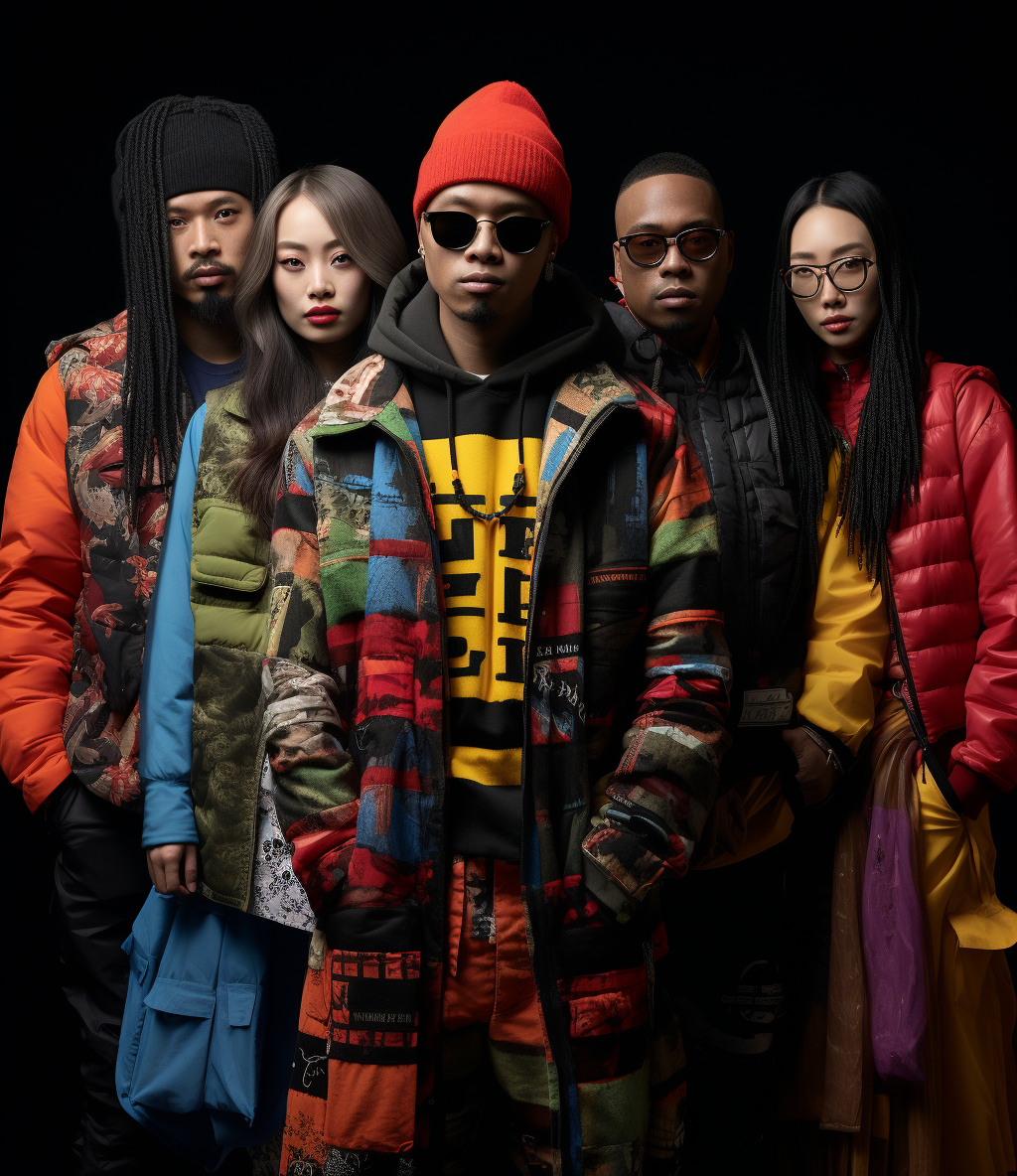
Image Description: An artist’s visualization of hip-hop fashion’s global impact. The image depicts a diverse group of individuals from various cultural backgrounds, each wearing streetwear-inspired clothing that reflects their unique identity. It showcases the global reach of hip-hop fashion and its ability to bring people from different parts of the world together through style.
Fashion as a Reflection of Society
Mirroring the Times
Fashion has always been a mirror reflecting the values, aspirations, and challenges of society. In this section, we will explore how hip-hop fashion of the 1980s served as a powerful reflection of the times, addressing social issues and sparking important conversations.
Rebellion Against Conformity
Challenging the Status Quo
The 1980s were marked by significant social and political changes. As a response to these shifts, hip-hop fashion emerged as a form of rebellion against the established norms. Oversized clothing, bold accessories, and unique hairstyles became symbols of resistance and nonconformity.
In a world where conformity was often expected, hip-hop fashion encouraged individuals to embrace their uniqueness and defy societal expectations. It was a statement that declared, “I am here, and I refuse to blend in.”
Addressing Economic Hardships
Making the Most of What You Have
The 1980s saw economic challenges that disproportionately affected marginalized communities. In response, hip-hop fashion celebrated resourcefulness and creativity. DIY aesthetics, including homemade patches and customized clothing, became prevalent.
This resourcefulness was not just a fashion statement; it was a survival strategy. Hip-hop fashion allowed individuals to express themselves even when faced with limited resources, proving that style could flourish in the face of adversity.
Cultural Identity and Pride
Embracing Roots
For many in the hip-hop community, fashion became a celebration of cultural identity and pride. African, Latinx, and Caribbean influences were woven into the fabric of streetwear. Kente cloth patterns, reggae-inspired colors, and Afro-centric designs found their place in the fashion landscape.
This celebration of cultural heritage was a powerful assertion of identity. It served as a reminder that fashion could be a form of cultural resistance, allowing individuals to reclaim their roots and challenge stereotypes.
A Catalyst for Social Change
Beyond the Runway
Hip-hop fashion was not just a form of personal expression; it was a catalyst for social change. It provided a platform for artists, designers, and activists to address critical issues such as racial inequality, economic disparities, and social justice.
From Run-DMC’s “My Adidas” to Public Enemy’s “Fight the Power,” music and fashion converged to amplify social messages. Hip-hop fashion became a vehicle for raising awareness and sparking important conversations, pushing boundaries and challenging the status quo.
Image Description: An artistic interpretation showcasing the role of hip-hop fashion in addressing social issues. The image features individuals dressed in 1980s streetwear, with bold accessories and hairstyles, participating in protests and social movements. It illustrates how fashion became a tool for advocacy and change during this transformative era.
Conclusion
Honoring a Fashion Revolution
In our journey through the eras of fashion history, we’ve embarked on a mesmerizing adventure through the 1980s, a time when hip-hop culture and streetwear fashion took the world by storm. What began as a rebellion against conformity became a global phenomenon, leaving an indelible mark on the fashion landscape.
We’ve explored oversized clothing that made bold statements, accessories that shimmered with attitude, and unique hairstyles that served as canvases for artistic expression. These elements defined an era that celebrated individuality and self-expression.
Hip-hop fashion wasn’t just about what we wear; it was a reflection of who we are and the times we lived in. It challenged the status quo, addressed social issues, and celebrated cultural diversity. It gave a voice to those who had been marginalized, and it continues to resonate in the world of fashion today.
As we bid farewell to this captivating journey through the 1980s, let us remember that fashion is more than just a collection of garments; it’s a tapestry of stories, an art form, and a reflection of our ever-evolving society. It’s a reminder that self-expression knows no boundaries, and style is a canvas waiting to be filled with the colors of our individuality.
FashionTimeWarp has been our guide on this remarkable journey, offering a window into the past and a glimpse of the future. It’s a testament to the enduring influence of fashion history and the power of self-expression through clothing.
As we step back into the present, may we carry with us the lessons and inspirations of the 1980s streetwear era, celebrating our uniqueness, challenging the status quo, and using fashion as a tool for change.
Image Description: An artistic representation symbolizing the culmination of our journey through 1980s hip-hop fashion. The image features a diverse group of individuals from various backgrounds, standing together in a vibrant cityscape. Each person is dressed in a fusion of 1980s streetwear and contemporary fashion, celebrating the timeless spirit of self-expression and individuality.


